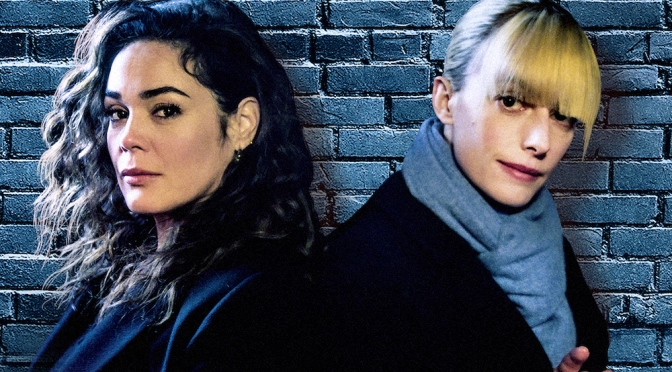
Astrid learns something about herself in this episode – but also seems to be walking towards a revelation of which she has no warning.
We’ve remarked before on the spooky supernatural overtones in Astrid, but almost always they are dispelled by rational explanation. In Natifs, the theme is Native American spirituality, and the prosaic reality is that someone has been bashing people’s heads in with a club. But are the two connected?
Astrid is now firmly back in her role as a consultant in Raph’s murder cases, the only hangover from her proposed suspension being that she has to pass policing exams. Academically, we assume this will be no issue – she is qualified, as she says – but socially, this could present a problem. We see her younger self as she tackles her first day in college, and though hesitant, she does cope a good deal better with being in company, and is fact idolised by some of the other students who know her by reputation.
Meanwhile, though, a young woman from a Native American family has been found stoned out of her head at the scene of a historical murder. She claims to have killed someone with a ceremonial club, but a skeleton found at the scene is 20 years old, so how could she have done it? The weapon does match the injury on the skeleton though, so how has the original murder weapon re-emerged after 20 years?
The solution conveniently comes with the help of Max, from Astrid’s support group. Okay, he’s Cheyenne, and the victims of the murders were Atikamekw, but he speaks the language and understands the culture.
The plot unfolds as one which touches on two contemporary issues; the exploitation of Native American reservation land by thieving corporations, and the way in which First Nations children were taken from their families, isolated from their cultures and in some cases exposed to physical and sexual abuse.
The suspect in the historical murder had supposedly gone on the run, but the tribe’s shaman identifies the skeleton as being that of the suspect – so who killed him, and indeed the original victim?
The shaman describes the murder weapon as a ‘casse-tete’, or ‘head-breaker’ – Astrid doesn’t like this, as ‘casse-tete’ is also slang for a puzzle, and she wouldn’t want her beloved puzzles to be associated with such a violent image.
Though he doesn’t give much evidence of being steeped in traditional wisdom (he doesn’t even have long hair), the shaman nonetheless informs Astrid that her spirit animal is the crow, a symbol of supernatural insight. This isn’t the first time we have been told that Astrid has some paranormal significance – remember Abdullah Hasri trying to recruit her into the Rose Cross?
By decoding some traditional symbology, tracking down a fake grave full of cash (in a scene reminiscent of The Good, the Bad and the Ugly) and applying observational skills to the scene of another murder, Astrid cracks the case, and not one but three murders are solved.
Astrid’s final challenge is to confront her stern tutor at the police academy, Mme Anne Langlais (played by Valérie Kaprisky, who we remember from 1983’s Breathless, where she played against Richard Gere in a remake of Jean-Luc Godard’s 1960 classic New Wave crime thriller Á Bout de Souffle).
The twist in Astrid is that Mme Langlais has on her phone a photo of Astrid’s rather, a cop who died in the line of duty. How well she knew him, what this implies about Astrid’s family, and when the girl will find out, remains to be seen.
A knotty little episode then, presenting a neat puzzle, throwing in some telling social commentary, teaching us a bit of culture we probably didn’t know, and opening up an intriguing plot thread. In all, a real medicine bag full.
Chris Jenkins
READ MORE: ALL OUR NEWS AND REVIEWS OF ASTRID
Astrid: Murder In Paris is shown in the UK on More4
